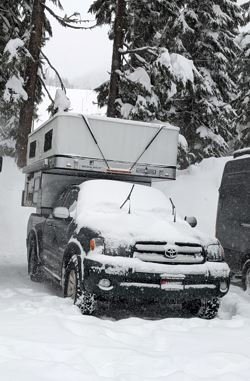ShopK33per
New Member
Hopping into the conversation after a few days in the Cascades.
Nighttime low was 10-15 degrees.
Heater always on (45 degrees at night and 60 during the day).
While I used the grey water outlet to drain some water after cooking, I had my tanks all winterized....
Damn @Wicked1 yeah I guess you could wire heaters to all of your pipes... that would do it.
Since we already are dealing with a grey water tank to move around, I've been using a standard 5 gallon jug for water during winter adventures, as I care more about the hot water than using the normal tank.. but I think I'm afraid of ruining the water heater and then having to deal with that ha!
I read through and didn't hear anyone talking about insulating windows or even the door area, which have huge heat loss.
Any window / door insulation mods?
Nighttime low was 10-15 degrees.
Heater always on (45 degrees at night and 60 during the day).
While I used the grey water outlet to drain some water after cooking, I had my tanks all winterized....
Damn @Wicked1 yeah I guess you could wire heaters to all of your pipes... that would do it.
Since we already are dealing with a grey water tank to move around, I've been using a standard 5 gallon jug for water during winter adventures, as I care more about the hot water than using the normal tank.. but I think I'm afraid of ruining the water heater and then having to deal with that ha!
I read through and didn't hear anyone talking about insulating windows or even the door area, which have huge heat loss.
Any window / door insulation mods?

